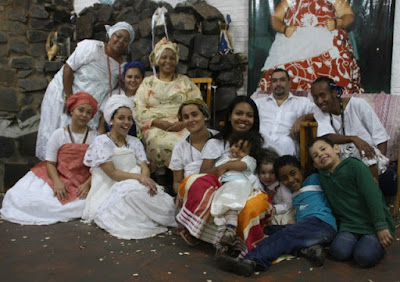Barge connection between Argentina and Paraguay

Photos: Welcome to President Franco sign on the limit with Ciudad del Este; the barge on the Iguazu River
A barge connecting what to what? Well, Puerto Iguazú, the gateway to tthe Iguassu Falls, headquarters of the Iguazú National Park and the owner of the Puerto Iguazu international Airport or IGR, in international airline ticketing language, is pretty well known. Puerto or Port Iguazu sits lazily on the left bank of the Iguassu River, right on the place where the Iguazu binational river (people down here like this binational thing as Itaipu Binational etc)ends its earthly course and from here on will travel as part of the Paraná River.
Across from Puerto Iguazu is Foz do Iguaçu where I sit writing this. Across the Paraná is Paraguay - and don't think about Ciudad del Este - Ciudad del Este is way upstream from the Rivers Convergence Point. The city we are talking Presidente Franco for short. The whole name is Ciudad Presidente Dr. Manuel Franco. The barge I am talking about is the one on the photograph that leaves Port Iguazú to Presidente Franco everyday. The first balsa (barge) leaves Puerto Iguazu at 08:00 a.m. The last barges leaves Puerto Iguazu at 05:30 p.m. The first barge to leave Franco is at 08h30and the last leaves Franco at 05:45. Each barge will tale people. cars, buses, trucks, vans and so on. The operation is official. On the Argentine side people and cars will get on and off the barge under the scrutiny of Immigration, Customs and Pefectura Naval (Similar to Coast Guard). On the Paraguayan side reception and bye-bye procedures are followed by National Police who also tale care of migration matters, customs and the Armada similar to the Argentine Prefectura Naval.
A word about Franco: the city thinks of itself as the mother of Ciudad del Este and several other Paraguayan cities located in the Alto Paraná or 10th Department of the Republic. Ciudad del Este former Ciudad Presidente Stroessner was founded on February, 3, 1957. You will see many things in town evoking the date like the 3 de Febrero Stadium where the America Cup 1999 was fought and won (by Brazil). I remember that Ronaldo Gaucho was shown to the world as part of the Brazilian Football
Team here.
Franco was founded in 1929 though there has never been an official foundation date since the place grew out of an "obrage" - an enterprize dedicated to the collection of 'mate herb'leaves deep in the then exisiting jungle and transportation to the river bank for shipping to processing and marketing somewhere else. People working for obrage enterprises were called mensú which practically and technically was slave labor. Besides dealing with herb mate the obrage capitalists has side businesses in lumber and forest products (you can read here trees and animal hide and meat). Each obrage had a man who served as "head". The head of this obrage was Vicente Antonio Matiauda related to President Stroessner from the president's mother family. The resident' whole name was Alfredo Stroessner Matiauda. This obrage gave rise to a little pueblo given the name of President Franco, who was Paraguay's president in 1929.
Before Ciudad del Este exisited, Franco was the full representative of Paraguay on the border. When people talked of Tres Fronteras (Three Frontiers, thre Borders) they were talking about thre cities meeting where the two rivers and three countries converge. "To be honest Ciudad del Este is ot part of the historical Three Frontiers" an angered Paraguayan newspaper writer told me a few days ago. His name is Luis Cataldi Viedma.
So before the International Frindship Bridge between Paraguay and Brazil (between Foz do Iguaçu and Ciudad President Stroessner - today's Ciudad del Este, the whole of the traffic between Brazil and Paragauay was through Franco and most importantly by Franco's barges. A bus travelling from São Paulo to Asunción would travel from Sao Paulo to Foz do IGuaçu, go to the old days-Porto Oficial of Foz do Iguaçu, get on the barge, navigate downriver as far as the Port of Franco, crwal up the rather steep riverbank and continue on to Asunción through the International Road already under construction.
Likewise all traffic from Argentina was made through this barge. After the bridges, both the Frindship Bridge with Paraguay and Fraternity Bridge with Argentina, the barges were put out of service and the neighborhoods died out. This is what happened to Ciudad President Franco that became just a dorm city for Ciudad del Este and this is what also happened on the Brazilian side to the entire area called Porto Meira where the Three Borders Marks are located.
Not long ago the services between Puerto Iguazú and Ciudad President Franco were officialy reinitiated bringing some life back to an area that had seen better days. That is why I include the barge on my list of things to do. If you are in Puerto Iguazú ( and if you have a visa for Paraguay, in case you need one), that is a good idea to go to Franco by barge. You can visit once there both the Monday Falls and the Moses Bertoni Museum.
There is a project for a new bridge connecting Brazil to Paraguay - a second bridge. The new bridge will be between Foz do Iguaçu and Ciudad Presidente Franco. I am almost sure that whenever this bridge is finished, the barge will die again.
I will come back with more on how to actually get around in Franco and so on



Comments